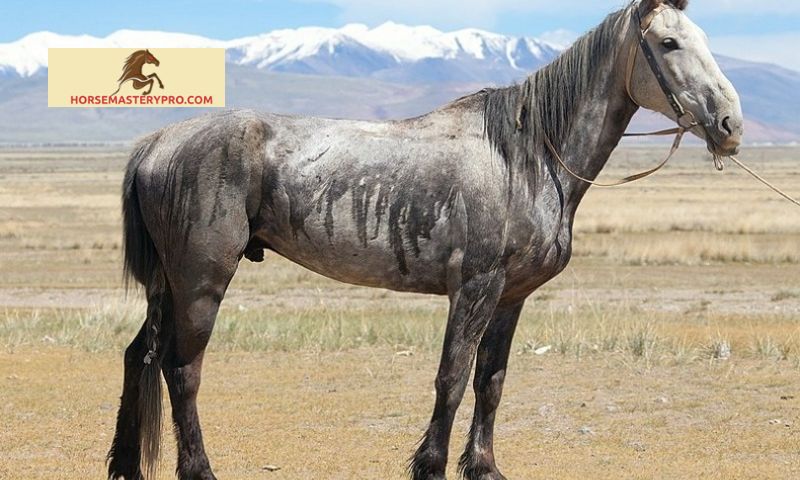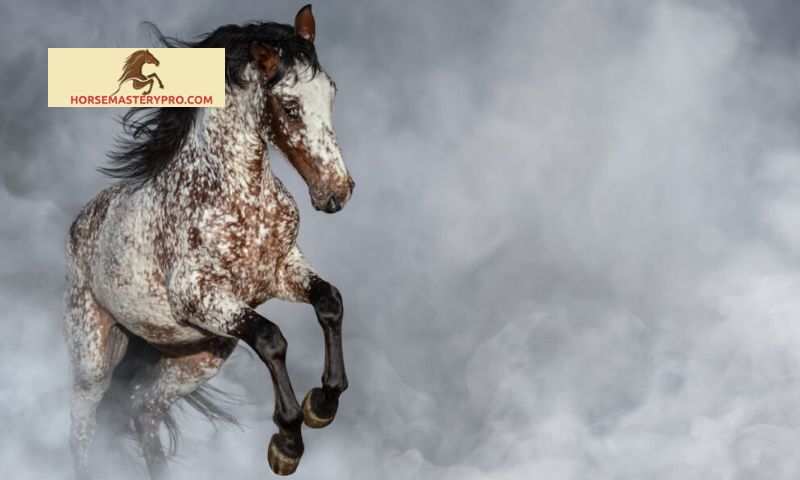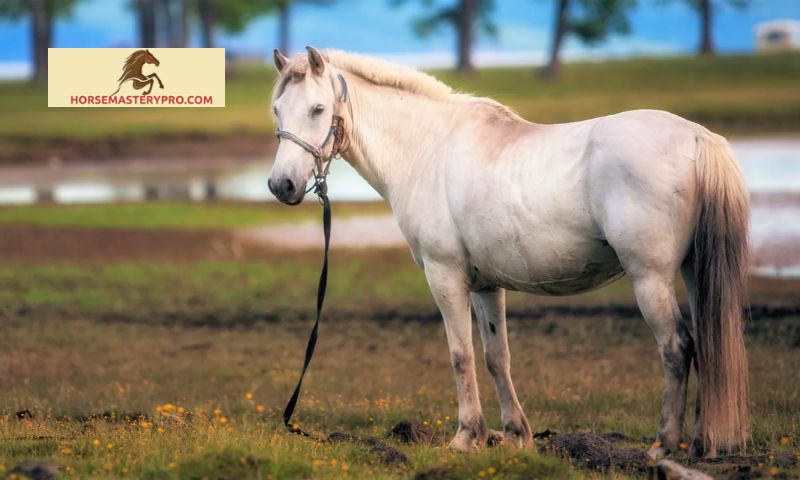Unveiling the Mystique of asian horse breeds: Explore the rich history, characteristics, and importance of these captivating equines in the equestrian world.
The world of horses is filled with a magnificent array of breeds, each with its own unique qualities and heritage. Among these, Asian horse breeds hold a special place, captivating equestrians and enthusiasts alike with their rich history and distinct characteristics. In this captivating journey, let’s delve into the realm of Asian horse breeds, exploring their allure and unraveling the secrets they hold.
A. What are Asian horse breeds?

Asian horse breeds encompass a diverse group of equines originating from the vast continent of Asia. From the majestic Arabian horse to the resilient Mongolian horse, these breeds have thrived for centuries, shaped by their native landscapes and the hands of their human companions. Each breed boasts its own fascinating story, reflecting the cultural tapestry and traditions of the regions they hail from.
B. Importance of Asian horse breeds in the equestrian world
Asian horse breeds have left an indelible mark on the equestrian world, influencing the development of various other breeds across the globe. Their unique attributes, such as endurance, agility, and adaptability, have made them invaluable in diverse disciplines, ranging from racing and endurance riding to dressage and show jumping. Moreover, their beauty and elegance have made them sought-after companions for leisure riding and equine therapy.
C. Overview of the article structure
To guide you through this exploration, this article will be divided into several sections. We will begin by tracing the historical roots of Asian horse breeds, unearthing the ancient origins and the prominent figures associated with their development. Next, we will dive into the physical attributes that make these breeds stand out, exploring their distinctive features and variations. Moving on, we will spotlight some of the most popular Asian horse breeds, shedding light on their individual histories, characteristics, and uses. As we progress, we will also discuss the challenges faced by these breeds and the conservation efforts dedicated to their preservation. Finally, we will conclude our journey, reflecting on the significance of Asian horse breeds and the future they hold in the equestrian world.
So, are you ready to embark on this captivating expedition? Join me as we uncover the captivating world of Asian horse breeds, where legends are born and the spirit of horsemanship thrives.
History of Asian Horse Breeds

A. Ancient origins and domestication
The story of Asian horse breeds begins in the mists of time, tracing back to their ancient origins and the early domestication of horses on the Asian continent. From the steppes of Central Asia to the deserts of Arabia, these magnificent creatures have been intertwined with human civilization for thousands of years. It was in these harsh landscapes that the bond between humans and horses was forged, enabling nomadic tribes and ancient civilizations to thrive.
B. Influence of Asian horse breeds on the development of other breeds
The influence of Asian horse breeds on the development of other breeds cannot be overstated. The Arabian horse, with its grace and elegance, has left an indelible mark on numerous breeds, contributing to their refinement and enhancing their athleticism. The Mongolian horse, renowned for its endurance and resilience, has played a crucial role in shaping the breeds used in long-distance racing and endurance riding. These breeds have not only influenced the physical attributes of other horses but also their temperament and character.
C. Notable historical figures associated with Asian horse breeds
Throughout history, there have been remarkable individuals who have recognized the exceptional qualities of Asian horse breeds and harnessed their power for various purposes. From legendary conquerors like Genghis Khan, who relied on the speed and endurance of Mongolian horses to build a vast empire, to renowned equestrians and breeders who have devoted their lives to preserving and promoting these breeds, the list of notable figures associated with Asian horse breeds is extensive. Their stories and achievements serve as a testament to the enduring legacy of these magnificent equines.
As we delve deeper into the history of Asian horse breeds, we will uncover the fascinating details of their ancient origins, the significant impact they have had on the development of other breeds, and the remarkable individuals who have shaped their history. Join me as we unravel the tapestry of the past and gain a deeper appreciation for the rich heritage of Asian horse breeds.
Characteristics and Physical Attributes

A. Common physical features of Asian horse breeds
Asian horse breeds exhibit a range of common physical features that set them apart from other breeds. One notable characteristic is their refined and elegant build, characterized by slender yet muscular bodies. Their graceful arched necks and expressive eyes add to their allure, capturing the hearts of horse enthusiasts worldwide.
B. Unique traits distinguishing them from other breeds
What truly distinguishes Asian horse breeds are their unique traits that have been honed over centuries. One such trait is their exceptional endurance, making them well-suited for long-distance travel and strenuous activities. Their innate intelligence and willingness to cooperate make them highly trainable and responsive to their rider’s cues.
Another distinctive feature is their hardiness and adaptability to diverse climates and terrains. From the scorching deserts of Arabia to the harsh steppes of Mongolia, these breeds have evolved to navigate challenging environments with ease, making them invaluable partners in various equestrian disciplines.
C. Variations in size, color, and coat patterns among different Asian horse breeds
Asian horse breeds exhibit a fascinating array of variations in size, color, and coat patterns. While Arabian horses are known for their compact and refined stature, Mongolian horses often possess a smaller and sturdier build, suited for their nomadic lifestyle. Akhal-Teke horses, on the other hand, are renowned for their distinctive metallic sheen, a result of their unique coat structure.
When it comes to color, Asian horse breeds display a spectrum ranging from solid shades to striking patterns. Arabian horses, for instance, encompass a wide range of coat colors, including chestnut, bay, gray, and black. Mongolian horses, on the other hand, commonly exhibit dun or bay coats, blending seamlessly with their natural surroundings. Akhal-Teke horses are famous for their dazzling metallic hues, such as golden, silver, and even iridescent shades.
In conclusion, Asian horse breeds possess a captivating combination of common physical features, unique traits, and variations in size, color, and coat patterns. Their elegance, endurance, adaptability, and striking appearances make them a treasure trove for equestrians seeking a remarkable equine companion. Stay tuned as we delve deeper into the world of specific Asian horse breeds and explore their individual stories, characteristics, and contributions to the equestrian realm.
Popular Asian Horse Breeds
In the realm of Asian horse breeds, there are several noteworthy breeds that have captured the hearts of horse enthusiasts worldwide. Let’s dive into the captivating stories and remarkable qualities of these esteemed equines.
A. Arabian Horse Breed
The Arabian horse breed, often hailed as the “prince of the desert,” boasts a rich and storied history that dates back thousands of years. Originating from the Arabian Peninsula, this breed has been cherished by Bedouin tribes for its unparalleled beauty, endurance, and loyalty.
1. History and Background
The Arabian horse’s lineage can be traced back to ancient times, where its resilience and speed made it an invaluable companion for nomadic tribes. Revered for their ability to survive in harsh desert environments, these horses became symbols of prestige and were treasured as prized possessions.
2. Physical Characteristics and Notable Traits
Arabian horses are renowned for their distinctive physical features, including a dished face, arched neck, and high tail carriage. Their compact yet muscular build enables them to excel in various disciplines, from racing and endurance riding to dressage and show jumping.
3. Popularity and Uses in Different Disciplines
The Arabian breed has gained immense popularity worldwide, captivating riders with its elegance and versatility. Their innate intelligence, agility, and willingness to please make them exceptional partners in both competitive and recreational pursuits. Whether it be the thrill of racing or the finesse of dressage, Arabian horses continue to leave their mark in the equestrian world.
B. Mongolian Horse Breed
Hailing from the rugged steppes and grasslands of Mongolia, the Mongolian horse breed stands as a testament to the resilience and adaptability of these remarkable equines.
1. Historical Significance and Native Habitat
The Mongolian horse breed has been an integral part of Mongolian culture for centuries. These hardy horses have played a vital role in the nomadic lifestyle of the Mongolian people, serving as reliable mounts for transportation, herding, and even warfare. Their ability to navigate challenging terrains and endure extreme weather conditions has made them indispensable companions throughout history.
2. Physical Attributes and Adaptability
Mongolian horses are known for their compact yet sturdy build, evolved to withstand the harsh conditions of their native habitat. Their dense winter coats and strong hooves enable them to thrive in freezing temperatures and traverse rugged landscapes with ease. Their resourcefulness and adaptability have allowed them to become one with the land they call home.
3. Traditional Uses and Cultural Importance
The Mongolian horse holds a significant place in Mongolian culture, deeply ingrained in the customs and traditions of the nomadic way of life. From the exhilarating sport of horse racing to the ancient art of eagle hunting, these horses have been integral to the survival and cultural heritage of the Mongolian people. Their enduring spirit and unwavering loyalty exemplify the deep bond between humans and horses.
C. Akhal-Teke Horse Breed
Originating from the vast expanses of Central Asia, the Akhal-Teke horse breed is a true embodiment of grace, elegance, and athletic prowess.
1. Origin and History
The Akhal-Teke breed traces its roots back to Turkmenistan, where it has been cherished for centuries by nomadic tribes and esteemed as a national treasure. Known as the “golden horse,” it has captivated the world with its luminous metallic coat and the rich cultural heritage it represents.
2. Distinctive Physical Features and Coat Color
Akhal-Teke horses are instantly recognizable by their slender build, long necks, and expressive eyes. However, it is their breathtakingly beautiful coat colors, ranging from a shimmering golden hue to various metallic shades, that truly set them apart from other breeds. This unique feature further enhances their allure and mystique.
3. Performance Abilities and Reputation in Sports
Beyond their striking appearance, Akhal-Teke horses have proven themselves in the realm of sports and competition. Renowned for their speed, endurance, and agility, they excel in disciplines such as endurance riding, show jumping, and dressage. Their natural athleticism, combined with their gentle temperament, has made them sought-after partners for riders seeking both elegance and performance.
As we explore these popular Asian horse breeds, we begin to grasp the depth of their beauty, history, and contributions to the equestrian world. Stay tuned as we continue our journey, unraveling more captivating tales and uncovering the secrets of these extraordinary equines.
Preservation and Conservation Efforts
Preserving the legacy and genetic diversity of Asian horse breeds is of paramount importance to ensure their survival for future generations. However, these magnificent equines face several challenges that threaten their existence. Let’s delve into the obstacles they encounter and the dedicated efforts made to protect them.
A. Challenges faced by Asian horse breeds
Asian horse breeds confront numerous challenges that pose a threat to their survival. Encroachment on their natural habitats, loss of grazing lands, and changing climatic conditions jeopardize their ability to thrive in their native environments. Additionally, the increasing demand for modern horse breeds and crossbreeding practices often overshadow the importance of preserving these ancient and unique breeds.
B. Initiatives and organizations dedicated to their preservation
Fortunately, various initiatives and organizations have emerged to safeguard the future of Asian horse breeds. These passionate advocates work tirelessly to raise awareness, conduct research, and implement conservation strategies. They strive to protect the breed’s genetic integrity, promote sustainable breeding practices, and ensure the well-being of these remarkable equines.
C. Role of breeding programs and genetic diversity in conservation
Breeding programs play a crucial role in the preservation of Asian horse breeds. These programs aim to maintain and enhance genetic diversity, preventing the loss of valuable traits and characteristics unique to each breed. By carefully selecting breeding pairs and promoting responsible breeding practices, these programs contribute to the long-term survival and viability of these breeds.
Genetic diversity is vital for the resilience and adaptability of Asian horse breeds. It allows them to withstand environmental challenges, resist diseases, and maintain their distinct traits. Efforts are underway to establish and maintain comprehensive breed registries, ensuring accurate documentation of pedigrees and promoting responsible breeding decisions.
Through a collaborative approach, combining the expertise of passionate individuals, breed societies, and scientific research, the preservation and conservation of Asian horse breeds can be achieved. By valuing their historical significance, cultural importance, and unique genetic heritage, we can secure a future where these magnificent equines continue to captivate and inspire generations to come.


